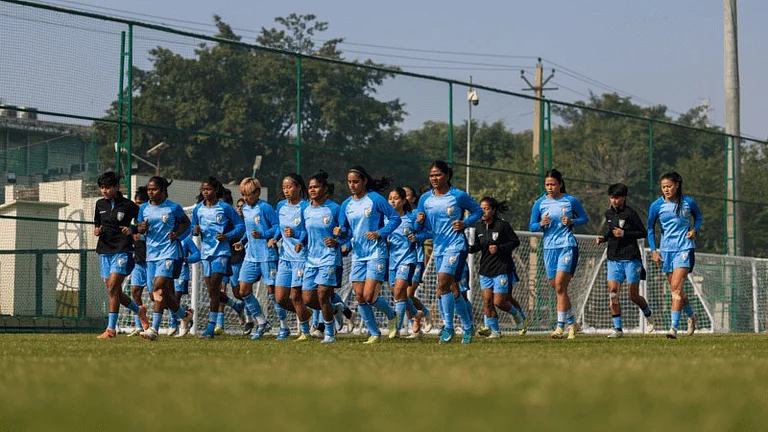Let the rain kiss you
Let the rain beat upon your head with silver liquid drops
Let the rain sing you a lullaby
The rain makes still pools on the sidewalk
The rain makes running pools in the gutter
The rain plays a little sleep song on our roof at night
And I love the rain.
—Langston Hughes
It's raining outside. There is an ever-changing rhythm to the sound of water falling, dancing in a synchronised motion. The sound of rain soothes the soul regardless of the languages you understand. Pitter-patter. Tap tap tap. And yet, there is something unique about every spell of rain, something totally strange, new. For some, it acts like a refresh button which washes off the old stains, repainting everything with a fresh stroke, a chance to start over or to start again. For others, rain is the forebearer of gloominess, and the greyness of the skies permeates into their core existence, taking them to a dark and forbidden place.
Rain is an essential part of the land where I come from. It’s part of its rhythm, its songs, its stories. The people who live here have spent a lifetime documenting rain in their memories and it is part of their life history. Rain comes up in the early morning conversations at tea shops, as people brood over newspapers. It comes up in counting people, dead and alive. It comes up every time there is waterlogging, which is to say, during every monsoon.
Growing up, the rain shaped some of my core childhood memories in the north Bihar town of Darbhanga. With the advent of the monsoon, there would be water everywhere. The city of ponds would become one large pond, with water from all water bodies conquering the roads. There was no discrimination between good or bad, dirty or pure water. One had to navigate it without thinking about the contents of the water. The only thing you carried with yourself was the sound of displaced water, frogs, crickets and their friends.
Children from my neighbourhood would wear their barsati chappals, and off they went, building makeshift tools using a bamboo stick to catch fish, paddling little bicycles that were half submerged, getting wet without a care. Innocent as we were then, we knew that the monsoon was not our loyal friend. Too little of it and the chatter around us would become about an impending drought. Too much of it, as it often was the case, and we would be waiting for the flood to arrive.
Jal star. The water level of rivers becomes the talk of town every monsoon, not only in Darbhanga but all over Bihar. Where has the water reached? Has it entered the low-lying areas? Every day an elder in every household would be responsible for the reminder that flood might arrive any day and we would all wait anxiously. While we waited, we would hear tales of floods of the past and the hardships people had to go through. The water entered our place at midnight and we all went upstairs. We would stand on the rooftop and wait for the helicopter to drop the relief material. They dropped candles, matchsticks, bread, biscuits, and also flattened rice. There was always something very surreal about growing up with their stories, which inspired within us a combination of adventure and horror.

Stories become more believable though, when told in writing by one of the greatest Hindi writers Bihar has ever produced. Phanishwar Nath Renu documents the flood of 1967 and other stories of water in his remarkable nonfiction Rinjal Dhanjal. Renu takes us back to the roads of Patna, as the Punpun river breaches many parts of Patna and people are told to stay indoors. His wit and the ease with which he switches many dialects of Hindi draws us in. We walk with him as he chases the sight of the flood. We look at the books and magazines at a magazine corner. And then we stay in his room as he waits for the water to recede. We wait, as many Biharis wait every year, for the arrival or departure of the flood. The names of the river change depending on where your geographical location is, but flooding seems inevitable. The magnitude of the flood is defined by the citadels it breaches. A village getting ravaged by the floods is almost routine. It is when towns and cities are penetrated, then flood becomes part of everyday folklore.
ALSO READ: Monsoons And The Interpreter Of Melodies
In north Bihar, Kosi is called the ‘Sorrow of Bihar’. A river that brings misery to the lives of people. That almost seems like an old metaphor in today’s day and age. How can a river cause so much sorrow in an age when humans dictate the direction which a river takes? We have made progress, haven’t we? Yet, every year, there is news of Kosi destroying villages. Most people living in low-lying areas are forced to migrate with their entire belongings, including domesticated animals. They are forced to depend on the government for their survival in relief camps.
The sight is unbelievable and would be hard to believe if our lives were untouched by it. People carry everything they own and just move. Clothes, utensils, even bricks which they would use to rebuild their house. They carry their entire house on their shoulders as they wait to return to their homes. The flood acts like a dictator, wiping people from the margins and redrawing boundaries with water. A ruthless and inconsiderate dictator.

The only thing people can do is to wait for the floods to recede. They wait. They also wait for the arrival of the compensation as promised by the government. They wait for salvaging whatever is left of their home. They wait to rebuild a house and then turn it into a home. One often forgets the psychological toll it must take on people who are displaced and have to rebuild again and again. Who cares about the mental health of people who don’t have the vocabulary and access to it, right?
Not everything can be blamed on the rain though. North Bihar is a perfect example of how most natural disasters are made possible by human intervention. Every year, when the level of water rises in th Kosi, there is a tussle between Nepal and Bihar, which share the brunt of the river. We hear news of Nepal releasing water through the Kosi barrage, and the floods arrive. In all fairness, Nepal releases its water to save many of its low-lying villages from flooding. But this starts off a ping-pong match, every year, where the common people suffer, no matter who wins. Floods have an unequal impact on the lives of the rich and poor. For the rich, it results in a few days of discomfort. For the poor, it results in complete destruction of homes and livelihoods.
This ping-pong match is almost an allegorical story, a story about climate change and mitigation. As unforeseen disasters loom on our heads, countries around the world continue to play a game where they pass on responsibility to each other, while the poor and marginalised, who have no say in the process, watch from the sidelines, waiting for their lives to be destroyed as a consequence of the actions or lack thereof, by their respective states. The structural problems are often reduced to individual tragedies, and individual tragedies disappear in the shadow of bigger, more immediate issues.
The allegories don’t end with north Bihar. The cities and towns of Bihar are a perfect example of a man-made disaster. Lack of urban planning and water management often results in terrible waterlogging only after a few days of rain. In contrast, aggressive construction over ponds and water bodies have resulted in acute water shortage in many parts of Bihar during summers. While we find ways of coping with the immediate disasters at hand, hardly any thought is given to the long, sobering disaster that awaits us. With climate change, extreme weather and unexpected disasters are adding to a catastrophe which is still in the making.
It is difficult to be very hopeful about anything being done to prepare for the tragedies that lie ahead of us. The people of Bihar have a long history of coping with disasters and tragedies and it sometimes seems as if the collective conscience of people has given up on the state and its machinery to prevent the destruction of lives and livelihood. And Bihar is not an exception. We are doing little to change the inequitable system in this country, where people belonging to the margins would always be worse off in the event of any disaster.
Bihar has changed a lot since Renu’s lifetime. And yet, in some aspects, little has changed. The rain continues to fall. And everything is submerged in the rain, including the hope for change. Without hope, poetry withdraws from our lives. Without poetry, how can one enjoy the rain, feel the rain as it touches our soul? Perhaps the rain is only the messenger, a well-wisher that wants to warn us of the disasters at hand. Perhaps we need to treat every spell of rain as a unique creature, with its distinct features and not consider it as part of the whole. To all of us, it may continue to mean different things. A reflection of our innermost desires and feelings. Some of us think about dancing in the rain while others prepare for the flood. In the times we live in, both are ways to save the world.
(This appeared in the print edition as "The Rain Speaks to Us")
(Views expressed are personal)
Abhishek Anicca is a patna-based writer, poet and performer



























